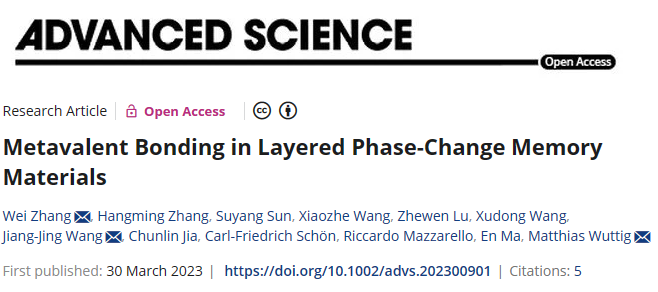
Metavalent bonding (MVB) is characterized by the competition between electron delocalization as in metallic bonding and electron localization as in covalent or ionic bonding, serving as an essential ingredient in phase-change materials for advanced memory applications. The crystalline phase-change materials exhibits MVB, which stems from the highly aligned p orbitals and results in large dielectric constants. Breaking the alignment of these chemical bonds leads to a drastic reduction in dielectric constants. In this work, it is clarified how MVB develops across the so-called van der Waals-like gaps in layered Sb2Te3 and Ge–Sb–Te alloys, where coupling of p orbitals is significantly reduced. A type of extended defect involving such gaps in thin films of trigonal Sb2Te3 is identified by atomic imaging experiments and ab initio simulations. It is shown that this defect has an impact on the structural and optical properties, which is consistent with the presence of non-negligible electron sharing in the gaps. Furthermore, the degree of MVB across the gaps is tailored by applying uniaxial strain, which results in a large variation of dielectric function and reflectivity in the trigonal phase. At last, design strategies are provided for applications utilizing the trigonal phase.
Link:https://onlinelibrary.wiley.com/doi/10.1002/advs.202300901